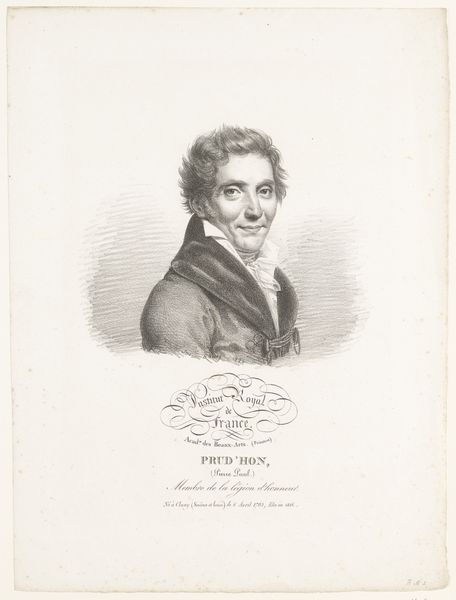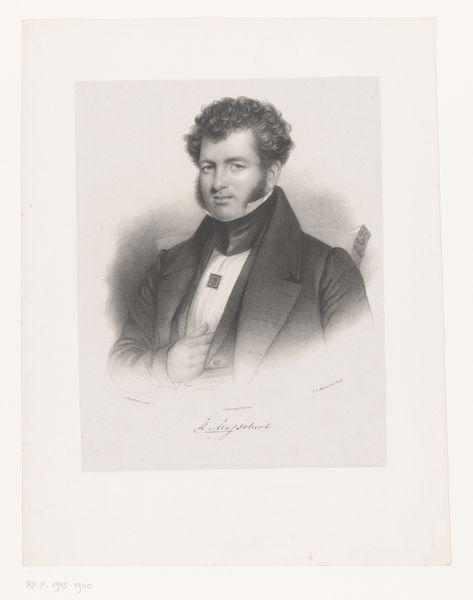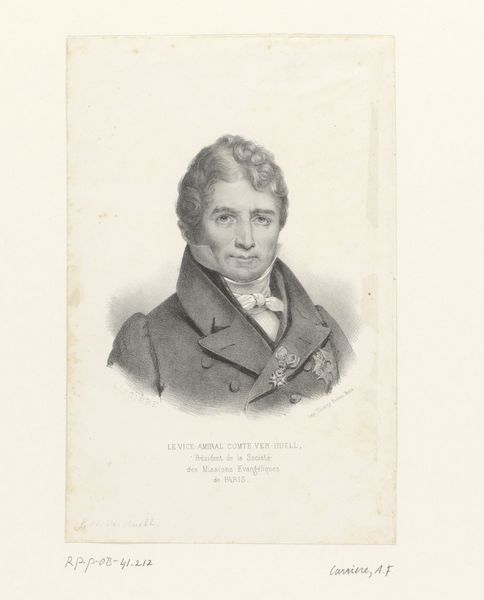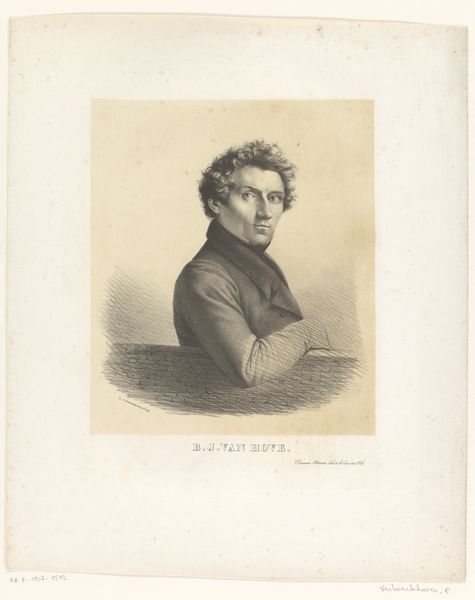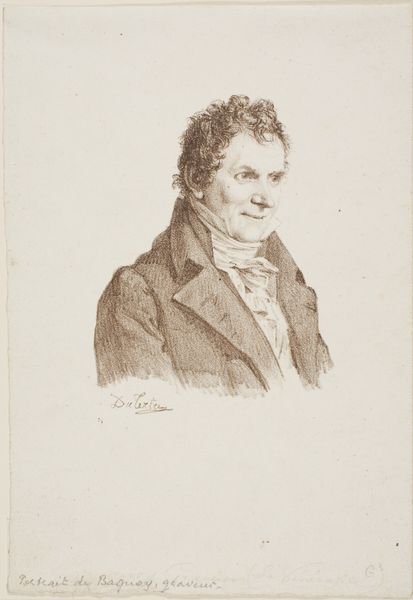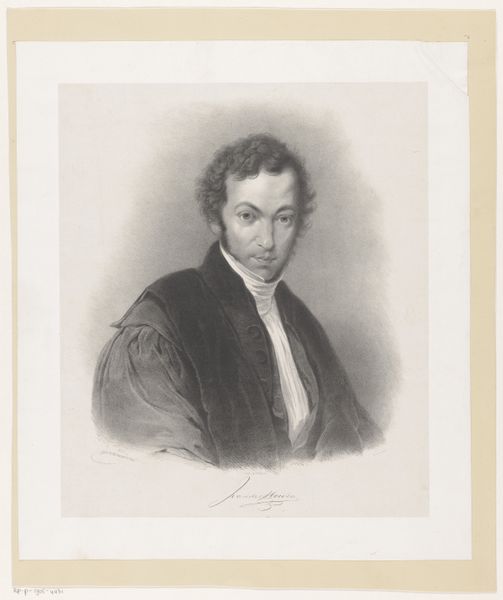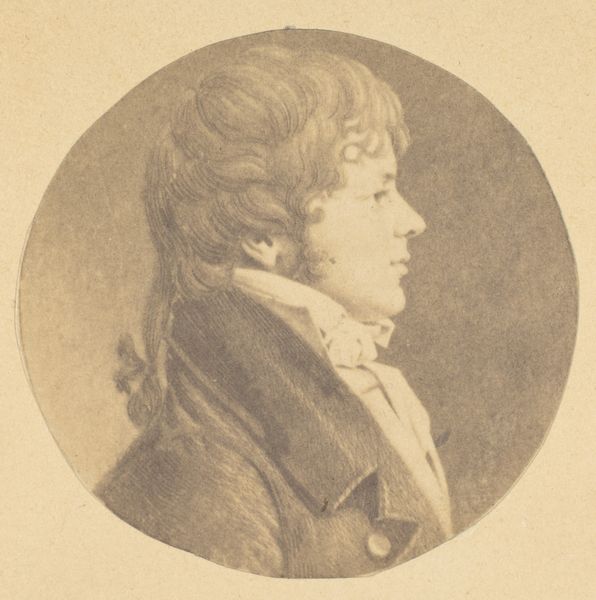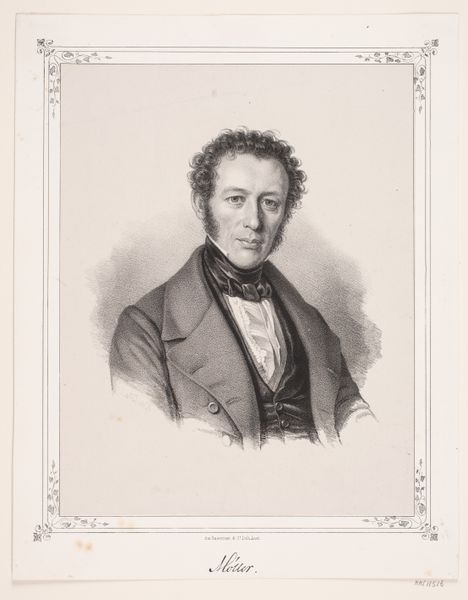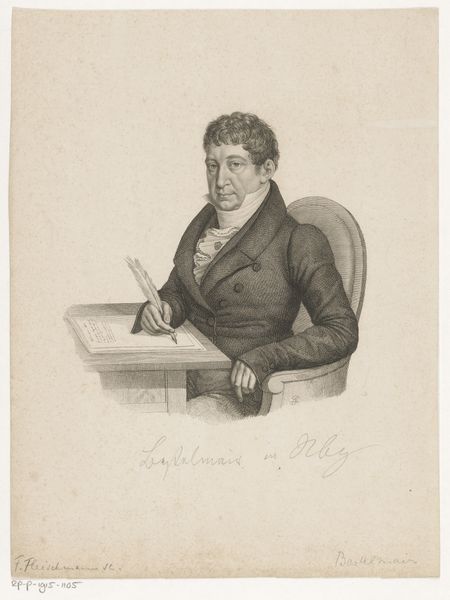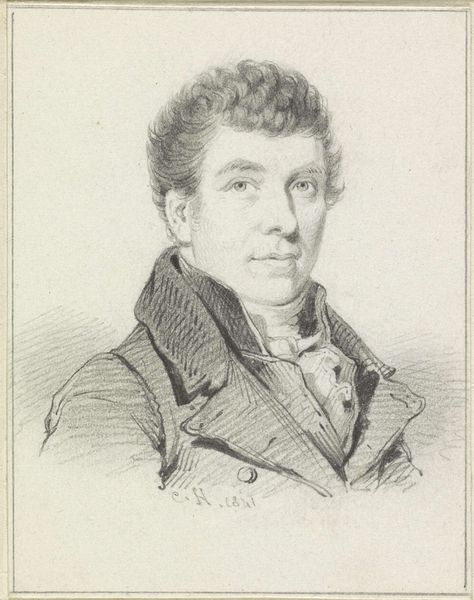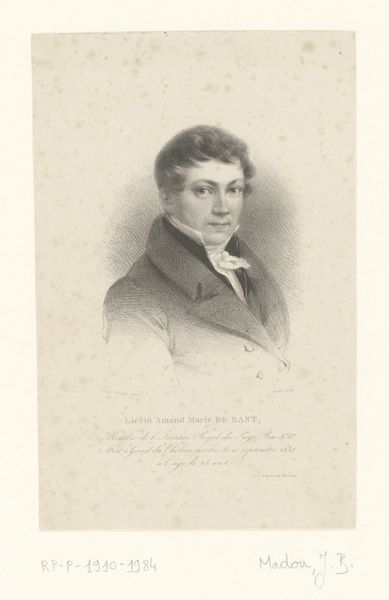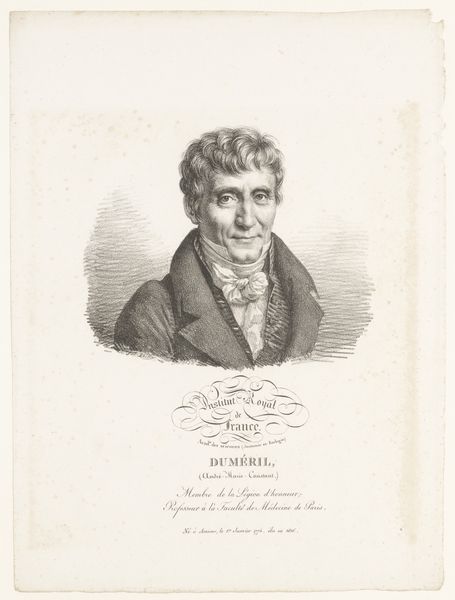
print, engraving
#
portrait
#
neoclacissism
#
self-portrait
# print
#
engraving
#
realism
Dimensions: height 260 mm, width 240 mm
Copyright: Rijks Museum: Open Domain
Curator: This is "Portret van een onbekende man," or "Portrait of an Unknown Man," an engraving from 1829 now residing in the Rijksmuseum. Editor: There's an immediate directness about it. It's striking how he seems to stare right through you. It's austere, yet those curls suggest something less serious. Curator: Yes, engravings like this served a specific function within society. Think of them as the mass media of their day. This artwork makes me think of class, status, and the dissemination of identity through print culture. These were frequently commissioned by individuals of status to circulate their likeness and reinforce social hierarchies. Editor: It raises interesting questions about accessibility. While intended to portray status, engravings also democratized image-making to an extent. Did having your portrait 'out there' change people’s relationship to visibility and self-image? Curator: Undoubtedly. While oil paintings were primarily available to aristocracy and the upper class, this form of reproductive art spread across different echelons of society. The portrait becomes more accessible; however, this is usually for people with at least middle-class aspirations. It would be interesting to delve more deeply into the original price, as well as the choices involved with this specific representation, such as the plain background, for instance. Editor: I agree. Consider too that he's an 'unknown man.' This anonymity subverts that aim of reinforcing status and makes me wonder who was able to gain visibility and who was not in this burgeoning age of media. Curator: And how identity was both constructed and sometimes obscured in the process of representation itself. He isn't presented with any accoutrements of power, as could be traditionally portrayed. Editor: Perhaps a statement in itself about the individual versus inherited privilege in this new era? What I appreciate most is how a 'simple' portrait manages to engage such relevant themes of class and power dynamics in media. Curator: It highlights the importance of critically examining how images, even those that appear straightforward, are never truly neutral, always communicating particular messages reflecting broader societal power dynamics. Editor: Precisely. Let’s continue onwards.
Comments
No comments
Be the first to comment and join the conversation on the ultimate creative platform.

